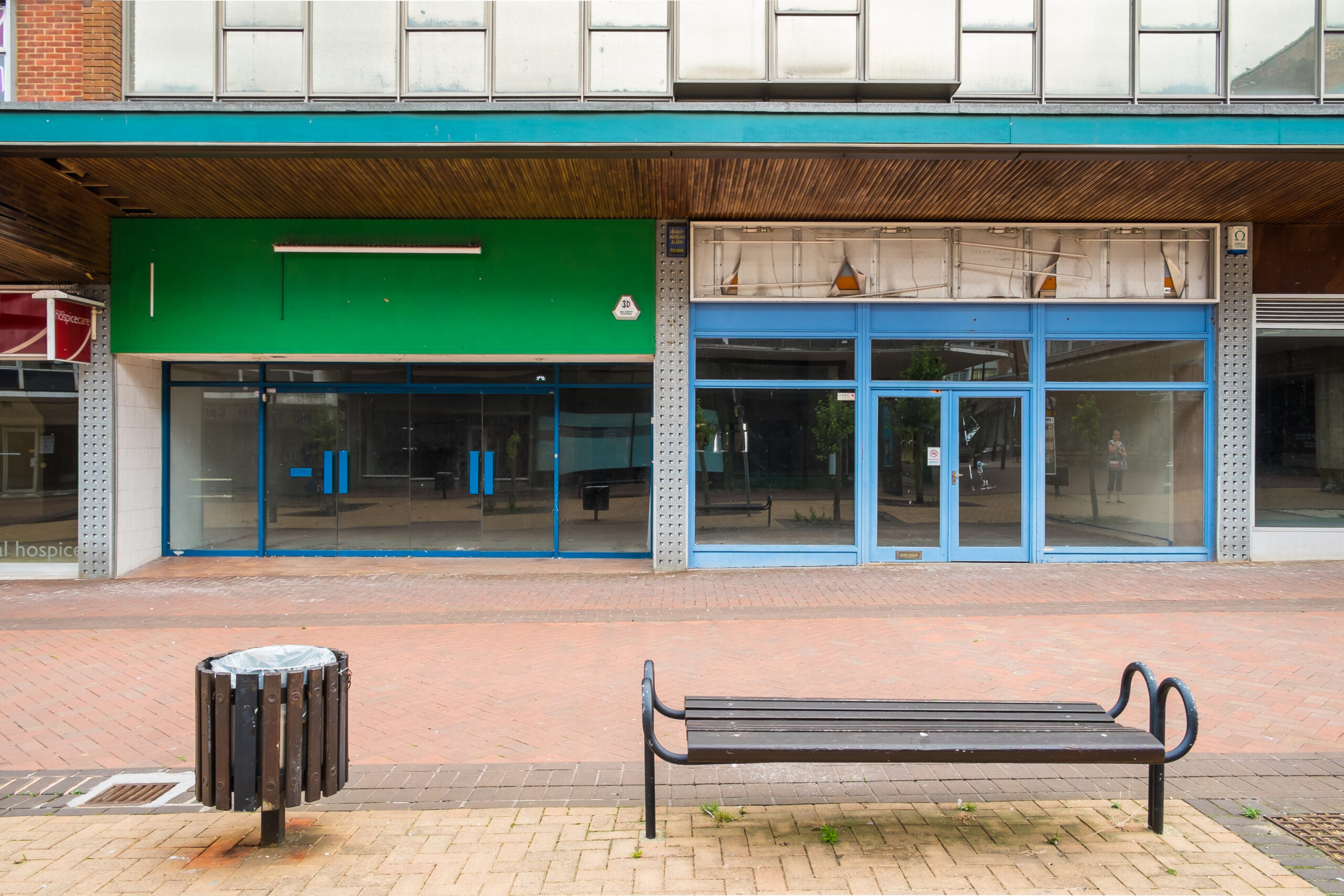A dilapidations inspection is an expert assessment to determine a commercial property’s condition, pinpointing any damage or a tenant’s failure to meet their lease obligations. It protects the landlord’s asset and exposure to expensive repair costs.
For landlords, property managers, and senior finance professionals (finance directors and CFOs), understanding how to manage repair and redecoration obligations is key to controlling property-related risks and costs. This guide will help you through the key points you need to know about protecting your investments.
What is a Dilapidation Inspection?
A dilapidation inspection is a specialised survey conducted commonly by a chartered building surveyor to assess the condition of a property and assess whether the tenant has been complying with their lease obligations. It can be conducted during the lease term (interim) or at the end (terminal).
The surveyor reviews the property’s current condition and assesses this against the lease obligations of the tenant to ensure that the property has been maintained accordingly. This includes examining structural elements, fixtures, fittings, decorative condition, and mechanical systems in the building, along with statutory obligations.
The assessment process involves a detailed review of all relevant documentation (lease, licences to alter, deeds of variation etc) followed by a review of the property taking into account factors such as the property’s age, expected general wear and tear, and the tenant’s specific responsibilities under the lease.
Based on this assessment, the landlord’s surveyor can create a schedule of dilapidations, a formal document that identifies necessary repairs, redecorations and reinstatement of tenant alterations, along with their associated costs.
There are two main types of schedule:
- An interim schedule of dilapidations is served during the lease term to address ongoing maintenance concerns before they become more serious problems.
- A terminal schedule of dilapidations is served at or near lease expiry to address all outstanding repairing, redecorating and reinstatement obligations that have accumulated over the tenancy period.
Why Are Dilapidation Assessments Important for Landlords?
Dilapidation assessments serve multiple important functions in protecting landlords’ interests and maintaining property value over time.
Here are key reasons why dilapidations matter for your commercial property investment:
Financial protection
When tenants breach their leases, landlords’ risk having to cover the repair costs. A dilapidations assessment provides the evidence needed to hold tenants accountable and support financial damages claims, helping landlords recover essential repair and redecoration costs from departing tenants.
Maintain property value
All buildings deteriorate over time, but some damage goes beyond reasonable wear and tear permitted under lease terms. Regular inspections help maintain properties in good condition throughout lease terms, protecting your long-term investment value. Dilapidations is an on-going process during the lease and should not be considered only at the lease end. This reduces the risk of a tenant becoming insolvent and leaving the landlord with a large dilapidations bill.
Avoid disputes
Establishing transparent expectations about maintenance standards reduces the risk of costly disputes. A well-conducted assessment strengthens your legal position during negotiations and ensures compliance with the RICS dilapidations protocol and relevant legislation.
Streamlines reletting or selling
Properties left in poor condition at lease end significantly impact your ability to attract new tenants. A terminal dilapidations schedule allows tenants to address issues before vacating, facilitating smooth transitions to new lease arrangements.
The Dilapidation Assessment Process: From Document Review to Dilapidations Claim
The dilapidation process follows a structured approach to ensure compliance with RICS guidelines and a robust, substantiated claim. This process includes the following stages:
- Documentation review. The appointed surveyor reviews all relevant documentation relating to the property and tenancy. This can include leases, licences to alter, deeds of variation, licences to assign. All leases are different and need to be reviewed carefully.
- Initial inspection. A dilapidation surveyor visits the property to assess and document its condition. They check the state of all fixtures, fittings, and structural elements to identify any issues. They take supporting photographs and measurements.
- Preparing the schedule. After inspection, the surveyor prepares a dilapidation schedule which clearly itemises any breaches of the tenant’s repairing, redecorating, reinstatement or statutory obligations. Costs are included to allow a financial settlement to be negotiated should the tenant fail to remedy the breaches before the lease end date.
- Serving the schedule. The completed schedule is formally served to the tenant, typically through a solicitor. It is usually accompanied by supporting evidence such as photographs and expert reports.
- Negotiating and settling claims. Most dilapidation claims are resolved through negotiation rather than in court. The surveyor helps the landlord and tenant reach a fair settlement that covers necessary costs, without escalating disputes. Settlements may take the form of the tenant undertaking the works, agreeing a financial settlement allowing the landlord to complete the works, or a combination of both.
How to Manage Dilapidations Claims Effectively
Managing these claims successfully requires a proactive approach. To make the process smoother and more cost-effective, landlords should:
- Engage a dilapidation surveyor early. Appoint a dilapidation surveyor 6-12 months before the lease expires. Their expertise maximises the chances of a successful outcome and ensures protocol compliance. With expert advice, you can navigate complex lease covenants.
- Keep thorough documentation. Maintaining detailed records throughout the tenancy strengthens your position significantly. This includes photographic evidence, records of alterations, and previous repair notices or interim schedules served during the lease.
- Be strategic in your negotiations. When negotiating settlements, consider the tenant’s ability to pay. Sometimes, it may be better to settle than deal with lengthy court proceedings.
- Follow protocol and timelines. Serve schedules at the appropriate time and maintain professional communication throughout negotiations. Early engagement leads to better outcomes for all parties. You can avoid the additional costs and uncertainty of protracted disputes.
Speak to Whybrow About Your Dilapidation Survey Needs
Our expert team at Whybrow specialises in all aspects of dilapidations. We act for landlords and tenants, which gives us a good understanding of issues from both perspectives. We can advise you during a lease term if you have concerns over the condition of your property or the financial standing of your tenant or at lease end.
Our services minimise your liabilities through expert guidance on all aspects of commercial property management. You’ll work directly with experienced professionals who understand both the technical, legal and commercial aspects of dilapidations.
Ready to discuss further? Contact us today or call 01206 577 667.
FAQs
What is the difference between an interim and terminal schedule of dilapidations?
An interim schedule often accompanies a repair notice issued during the lease term to remind tenants of their responsibilities. If tenants ignore the notice, landlords can usually intervene, repair, and recover costs under specific lease clauses.
A terminal schedule of dilapidations is a formal document served at or near lease expiry to address breaches before the tenant vacates. This schedule covers structural and fabric repairs, redecoration, and tenant reinstatement and statutory obligations.
Who pays for a dilapidations schedule?
Typically, the landlord is responsible for meeting the cost of the schedule preparation and service, however most leases include a cost recovery clause, allowing the landlord to recover the fee from the tenant.
What happens after a schedule of dilapidations is served?
Tenants or surveyors appointed by them, have a reasonable period of 56 days to respond. This may involve disputing items, proposing alternative solutions, or negotiating a financial settlement. The goal is usually to reach an agreement without costly and lengthy legal proceedings.













